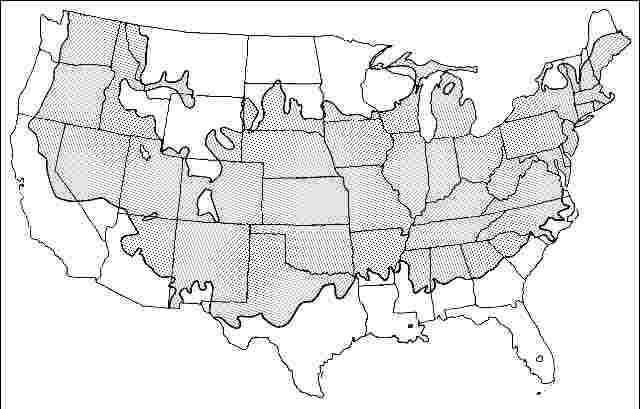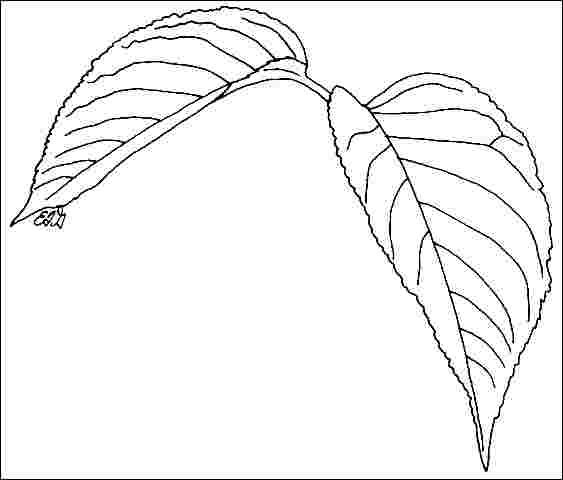Introduction
If you want green leaves on a tree during a severe drought, this is your tree! This little-known but urban-tough, very attractive, 40- to 60-foot-high, slow-growing, deciduous tree has a dense, symmetrical oval to rounded crown and low-branched silhouette, making it ideal for use as a specimen, shade or street tree. The thin, 3- to 8-inch-long, glossy, dark green leaves are almost totally resistant to pests and disease and remain an attractive dark green throughout the summer, changing only to a paler green before dropping in early fall. The foliage is quite striking and appears to glimmer in the moonlight or when lit from above. Branches ascend forming an upright silhouette in winter. The inconspicuous blooms are followed by the production of small, 1.5-inch-long, flat, winged seeds. Only one or two corrective prunings at an early age normally is all that is needed to develop good structure in the crown.

General Information
Scientific name: Eucommia ulmoides
Pronunciation: yoo-KOM-ee-uh ul-MOY-deez
Common name(s): Hardy rubber tree
Family: Eucommiaceae
USDA hardiness zones: 4B through 7B (Fig. 2)
Origin: not native to North America
Invasive potential: little invasive potential
Uses: specimen; shade; street without sidewalk; screen; parking lot island < 100 sq ft; parking lot island 100–200 sq ft; parking lot island > 200 sq ft; sidewalk cutout (tree pit); tree lawn 3–4 feet wide; tree lawn 4–6 feet wide; tree lawn > 6 ft wide; urban tolerant; highway median; container or planter
Availability: not native to North America

Description
Height: 40 to 60 feet
Spread: 25 to 35 feet
Crown uniformity: symmetrical
Crown shape: round, spreading
Crown density: dense
Growth rate: slow
Texture: medium
Foliage
Leaf arrangement: alternate (Fig. 3)
Leaf type: simple
Leaf margin: serrate
Leaf shape: elliptic (oval), ovate, oblong
Leaf venation: pinnate
Leaf type and persistence: deciduous
Leaf blade length: 2 to 4 inches, 4 to 8 inches
Leaf color: green
Fall color: no color change
Fall characteristic: not showy

Flower
Flower color: brown
Flower characteristics: not showy
Fruit
Fruit shape: oval
Fruit length: 1 to 3 inches
Fruit covering: fleshy
Fruit color: unknown
Fruit characteristics: does not attract wildlife; not showy; fruit/leaves not a litter problem
Trunk and Branches
Trunk/bark/branches: branches don't droop; showy; typically one trunk; thorns
Pruning requirement: needed for strong structure
Breakage: resistant
Current year twig color: brown
Current year twig thickness: medium, thick
Wood specific gravity: unknown
Culture
Light requirement: full sun
Soil tolerances: clay; sand; loam; alkaline; acidic; well-drained
Drought tolerance: high
Aerosol salt tolerance: moderate
Other
Roots: not a problem
Winter interest: yes
Outstanding tree: yes
Ozone sensitivity: unknown
Verticillium wilt susceptibility: unknown
Pest resistance: free of serious pests and diseases
Use and Management
The Chinese have used the hardy rubber tree for more than 2,000 years for its medicinal value. Trees there rarely reach a mature size since they are harvested regularly and stripped of their ridged or furrowed, grey/brown bark. Hardy rubber tree may be the only tree which grows in cold climates from which a rubber product can be obtained. This rubbery substance is visible as thin strands which bridge two sections of a torn leaf.
Hardy rubber tree should be grown in full sun on moist soil but when well-established tolerates extensive drought. Trees have been growing in parts of North Carolina for many years without irrigation and have survived extreme drought in very poor, clay soil in the full sun. But they grow slowly. They should be grown and tried more often in urban areas such as in highway medians, along streets and as a medium-sized shade tree. Growth rate appears to be quite slow but could probably be improved with adequate irrigation. The tree is adapted to high soil pH.
Propagation is by seed or cuttings.
Pests and Diseases
Amazingly free of any problems but do not plant it in poorly-drained soil.